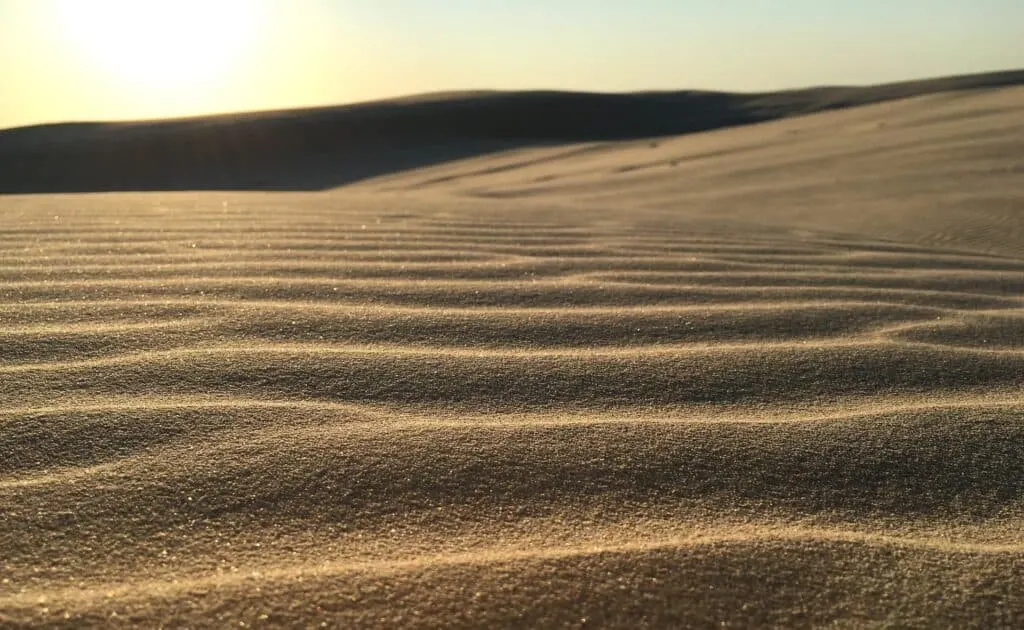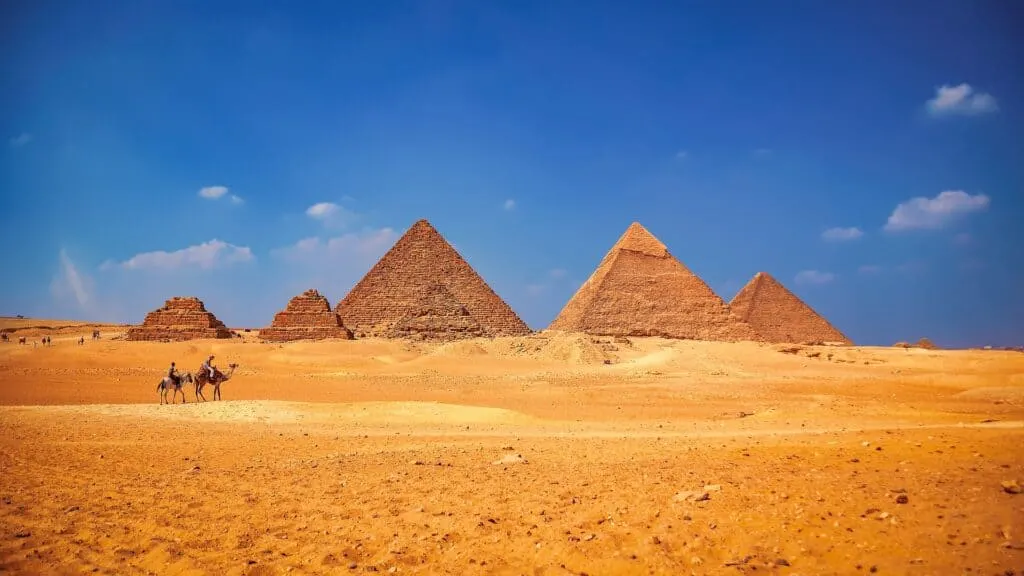As an Amazon Associate, I earn from qualifying purchases with no additional costs for you.
While rocks and minerals might seem like the most ordinary objects in the world, they possess many incredible qualities that could make you double-take the next time you spot a stone lying on the roadside.
Did you know that quartz is considered the most widely available mineral? Can you imagine several rocks worldwide that are so culturally important that they symbolize a whole city, region, or civilization? Can you look around you and name all the things that wouldn’t work without the minerals they contain?
After reading this article, you may look twice at the stones you see around you every day, and you most definitely will think about some everyday appliances differently because of the minerals that make them work.

If you want to check out the most beautiful gemstone to buy, you can find it here (Amazon link).
1. Minerals and Rocks are Very Different
Minerals are naturally occurring substances that exhibit consistent properties throughout their entire composition. In essence, if you examine a mineral, you’ll find that all its constituent parts are composed of the exact same material. Minerals possess a distinct internal structure, and hundreds of different types are known to exist.
In contrast, rocks are classified into three main categories: Igneous, Sedimentary, and Metamorphic. They are composed of varying amounts of different mineral types, lacking a clear or uniform internal structure. Rocks are more abundant than minerals because the formation of minerals requires very specific processes and conditions to occur.
2. Rubies and Sapphires are the Same Minerals
Corundum is a remarkable mineral known for its exceptional hardness, making it a highly sought-after gemstone material. This mineral can manifest in nearly every colour of the spectrum, but when it appears in a vibrant red hue, it is classified as a ruby.
Interestingly, trace amounts of specific metals determine the corundum’s colour. The type of metal involved during the mineral’s formation dictates the final colour it will exhibit.
In its purest form, when corundum is devoid of metal impurities, it remains colourless and is referred to as a clear sapphire. However, when chromium is present during the formation process, the corundum takes on a striking red colour, earning it the designation of a ruby. Similarly, when titanium is present, the corundum assumes a mesmerizing blue hue, resulting in the most widely recognized and coveted sapphire colour.
3. Quartz is Used in all Watches, Radios, and Microprocessors

Quartz is a mineral with a unique ability to maintain a precise frequency standard, making it an essential component in various electrical devices.
This remarkable property allows quartz to smooth out irregularities in electromagnetic waves, resulting in much more accurate and reliable performance in these devices. Some of the quartz used in these applications is synthetically produced to optimize the frequency regulation capabilities of quartz, as the manufacturing process can be tailored to achieve the most desirable frequency characteristics.
In terms of its composition, quartz is made up of silicon and oxygen. Silicon is classified as a semiconductor, meaning it can conduct electricity like copper wire under specific conditions.
One of the most interesting properties of quartz is its ability to conduct electricity when subjected to pressure. This piezoelectric effect makes quartz particularly useful in certain mechanical devices, finding applications primarily in industrial settings where precise control and monitoring of pressure-sensitive systems are crucial.
4. Alexandrite is Considered one of the Rarest Minerals
Alexandrite, a mesmerizing mineral, is renowned for its remarkable ability to change colour depending on the
light it is exposed to. The most striking examples of this phenomenon display a captivating emerald green hue when viewed under daylight or fluorescent light but then transform dramatically, shifting to a rich brown or purple colour when illuminated by incandescent light or firelight.
This fascinating colour-changing property, the alexandrite effect, is attributed to the mineral’s unique light absorption. The selective absorption of different wavelengths of light by the mineral’s chemical structure results in this eye-catching colour shift.
Alexandrite was first discovered in Russia, where some of the most spectacular specimens were found. However, over time, additional sources of this intriguing mineral have been uncovered in various parts of Asia and Africa, including Sri Lanka, where significant deposits have been identified.
The rarity and beauty of alexandrite and its extraordinary colour-changing abilities have made it a highly sought-after gemstone among collectors and enthusiasts. Its captivating appearance and the allure of its optical properties continue to fascinate and inspire those who appreciate the wonders of the mineral world.
TIP: There are a lot of gems that are far rarer and more expensive than diamonds. Check out the rarest gemstones on Earth in the article below:
13 Rarest Gemstones on Earth: You will be Shocked!
5. The Sandstone in the Southern Alps of New Zealand is the Quickest Eroding Stone Recorded
Determining the rate of erosion can be challenging. Still, geologists have devised a method that involves measuring the amount of sand resulting from the erosion process over the course of a year. In the case of these particular mountains, the sandstone is currently eroding at a rate that produces 2.5 mm of sand annually.
Scientists believe the erosion process is primarily driven by the rock’s chemical composition, making it susceptible to breakdown when exposed to the sun’s rays. The specific chemical makeup of the sandstone renders it vulnerable to weathering and decomposition under the influence of sunlight.
Interestingly, the soil that forms due to this erosion process engages in a chemical interaction with the environment, effectively absorbing carbon dioxide. This means that as the mountains gradually erode, they also mitigate the presence of this greenhouse gas in the atmosphere.
The relationship between these mountains’ erosion and carbon dioxide absorption highlights the intricate and interconnected nature of Earth’s geological and ecological systems. As the sandstone slowly breaks down and transforms into soil, it not only reshapes the landscape but also contributes to the larger cycle of carbon exchange between the land and the atmosphere.
6. Jadeite is Currently the Most Expensive Mineral
Jadeite, often referred to as imperial jade, is renowned for its stunning appearance, which surpasses that of typical jade in terms of its majestic quality.
China is the largest market for this highly prized mineral, as it holds immense cultural value. However, the finest quality jadeite is actually sourced from Myanmar, where the most exceptional specimens are discovered.
In its purest and most valuable form, jadeite assumes a rich, vibrant green hue that captivates the eye and stirs the imagination. The rarity of top-grade jadeite, combined with its deep-rooted cultural significance and mesmerizing color, contributes to its extraordinary value.
The allure of imperial jade extends beyond its visual beauty, as it is also cherished for its durability and the skillful craftsmanship required to shape it into exquisite jewelry and decorative objects. In Chinese culture, jadeite is associated with virtues such as wisdom, purity, and nobility, further enhancing its desirability and prestige.
As a result, the demand for high-quality jadeite remains strong, particularly in China, where it continues to be sought after by collectors, connoisseurs, and those who appreciate its cultural heritage. The combination of its scarcity, cultural importance, and striking appearance solidifies jadeite’s position as one of the world’s most valuable and coveted minerals.
BTW: Do you want to know more about rock and mineral identification? The books listed below are the best ones you can find on the internet (Amazon links):
- Smithsonian Handbooks: Rocks & Minerals
- Gemstone & Crystal Properties (Quick Study Home)
- Ultimate Explorer Field Guide: Rocks and Minerals (National Geographic Kids)
7. Metals Are Also Minerals
It’s fascinating to consider that because minerals are classified as pure, inorganic substances, metals that meet these criteria are also considered minerals. This means that the next time you encounter a copper pipe, you might view it in a new light, appreciating its status as a mineral.
Interestingly, despite being ubiquitous and essential daily, steel never qualifies as a mineral. This is because steel is composed of two distinct minerals, typically iron, and carbon, which automatically disqualifies it from being classified as a mineral in its own right.
This distinction highlights the precise definition of a mineral and the importance of understanding the fundamental characteristics that set minerals apart from other substances. While steel is an alloy that combines the properties of multiple minerals to achieve its desired strength and durability, it lacks the purity and singular composition required to be considered a mineral.
So, the next time you come across a copper pipe or any other metal object made from a single, pure substance, take a moment to appreciate its mineral status and the fascinating geological processes that have brought it into existence. Meanwhile, steel serves as a reminder of the ingenuity and innovation humans have employed to create materials with unique properties by combining different minerals in specific ways.
TIP: Have you ever tried finding rocks with a metal detector? Find out everything you need to know about using a metal detector for rockhounding in the article below:
How to Actually Find Gems with a Metal Detector? It’s Easy!
8. Potash is One of the Most Useful Minerals, and You may have Never Heard of It
Potash, the common name for Potassium Chloride, is a potassium-rich salt extracted from regions that were once ancient oceans but have since dried up and become part of the Earth’s continents. This mineral plays a crucial role in a vital industry that supports life across the globe. Can you guess what it’s used for?
Potash is an essential and indispensable fertilizer component used on farms worldwide to support plant growth and improve crop yields. That’s right, plants actually “consume” minerals, and it’s important for us to ensure that they have access to the necessary nutrients for optimal growth.
The three elements most critical for the healthy development of many plants are nitrogen, phosphorous, and potassium. While nitrogen is abundant in the Earth’s atmosphere, potassium and phosphorous must be in the soil for plants to thrive. In cases where the soil is deficient in these minerals, farmers rely on fertilizers containing potash to supplement the soil and provide plants with the essential potassium they need.
9. Common Sand is the Main Ingredient in your Windows

Most beach sands are mostly made of silicon dioxide (quartz). Most glass is made by heating it up to over 3090F and cooling it in a controlled fashion.
In fact, differences between the glass are characterized partially by how hot the sand is heated – windshield glass is heated to much higher temperatures than normal window glass.
10. The Crust of Mars is Comprised of Minerals most Common in Igneous Rocks
Silicon, oxygen, iron, magnesium, aluminum, calcium, and potassium are believed to be the most abundant minerals on Mars. Interestingly, these same minerals are typically found together in Igneous rock here on Earth, highlighting the remarkable similarities between the two planets despite the vast distance that separates them.
The presence of these familiar minerals on Mars and the discovery of tridymite, a mineral that forms under high temperatures and silica-rich conditions, strongly suggests that the Red Planet has experienced significant volcanic activity throughout its history.
TIP: Mars is the closest planet to Earth. However, the nearest cosmic object is the Moon, and we can also admire the rocks from the Moon on Earth. Find out more about Moon rocks in the article below:
Moon Rocks: Everything You Need to Know About Them
11. Gypsum is a Mineral That is Used as a Building Material in Most Buildings
You probably know the inside of your walls is made of gypsum or drywall. You may not know that gypsum is also used in some concrete mixes to slow down the hardening process, and it is called a “retarder.” It has an extremely low hardness of two, which limits its use, but it’s still widely used.
So, why is gypsum so useful? It is very fire resistant. Gypsum’s composition includes two water molecules, so when it burns, these molecules first evaporate, leaving a solid behind, which just turns into powder.
The time this process takes is extremely valuable when one talks about saving a building’s structure from fire damage.
12. On average, Americans use 40,000 pounds of minerals per year
Minerals play a far more significant role in our daily lives than most people realize. Beyond their well-known applications, minerals are also found in the seasonings we use to flavor our meals, the vitamins we take to support our health, and the vast majority of household appliances we rely on daily.
From the salt we sprinkle on our food to the complex blend of minerals that make up our daily multivitamins, these inorganic compounds are essential to maintaining our well-being and enhancing our quality of life.
Moreover, minerals are integral to nearly all household appliances, from the stainless steel in our kitchen sinks to the copper wiring in our electronics. These minerals provide the necessary properties, such as durability, conductivity, and heat resistance, that enable our appliances to function efficiently and reliably.
The pervasive presence of minerals in our daily lives highlights their immense importance and critical role in shaping our modern world. As we continue to explore and understand the properties and applications of these fascinating substances, we gain a deeper appreciation for the complex interplay between the Earth’s geological resources and the technologies and conveniences we often take for granted.
13- Eighty Percent of the World’s Gold has yet to be Discovered
This is of course, an estimation, but mining technology is extremely good at locating minerals and finding the size of deposits. It is not being extracted because, in many cases, it is cheaper to buy the gold than it is to mine.
This can happen for many reasons. The deposit could be too deep to reach or in a terrain that is too far away from a developed area.
TIP: You need to know something about how gold deposits occur to understand which rocks to look for when prospecting. Find out useful tips on finding gold in the article below:
5 Rocks You Need To Look For When Gold Prospecting (+ Why)
14. The Pyramids of Giza are Made Entirely from Limestone

Limestone has interesting properties and is very common, which has made it a popular building material throughout history.
It is a sedimentary rock made from aragonite and calcium and can break down due to acidity, making acid rain a huge threat to limestone structures.
Limestone was the most common material around Egypt at the time, which made it the most attractive building material from them. It is also an easy material to cut, making it easier for the Egyptians to form the exact shapes they needed.
15. The Most Famous Rock is the Rosetta Stone
This stone was found in 1799 by Napoleon’s posse and later helped finally decipher what had stumped language experts for centuries: the translation of Egyptian Hieroglyphics.
It has become a synonym for translation in modern life. Stone is a granite type, but its importance goes far beyond that!
Conclusion
The many use and complicated characteristics of different types of rocks and minerals are a testament to the wonders of the natural world.
Even more so, they are a testament to the ingenuity of humans, using our environment to the fullest by putting all our resources to use.
Try to recognize minerals in your everyday life; when you do, think about the complicated processes that form them.
TIP: Igneous rocks are an integral part of all rocks that make up our planet; that is why there are a lot of interesting facts to be shared. Find out more in the article below:
11 Cool & Interesting Facts About Igneous Rocks (Must Read)
